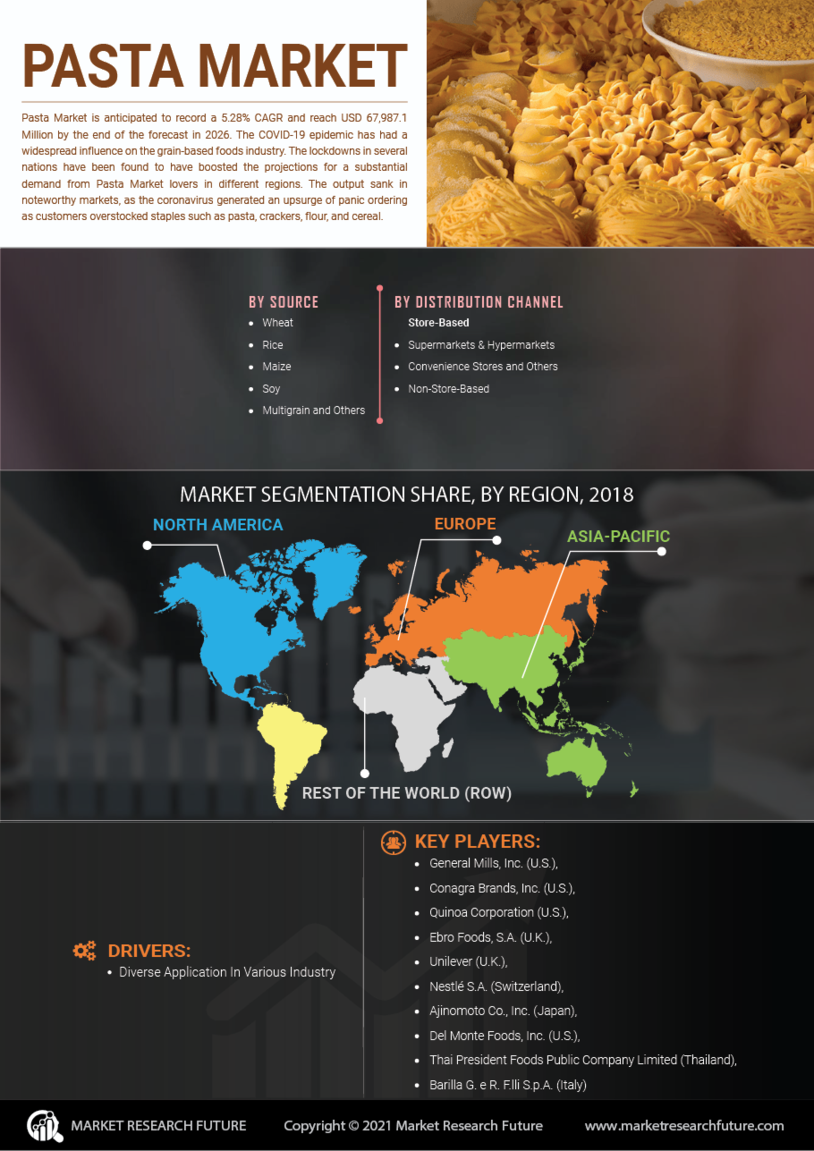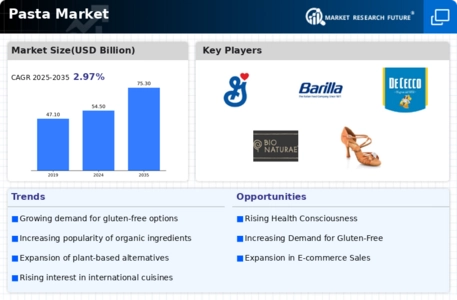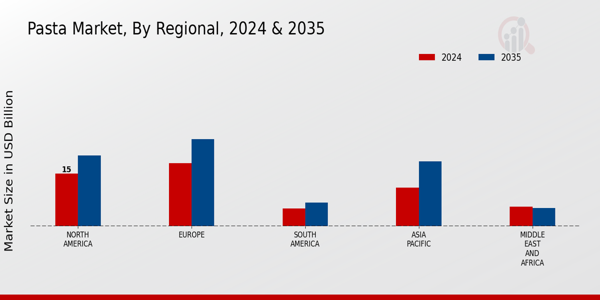Market Growth Projections
The Global Pasta Market Industry is projected to experience substantial growth over the coming years. With a market value of 54.5 USD Billion in 2024, it is anticipated to reach 75.3 USD Billion by 2035. This growth trajectory indicates a robust compound annual growth rate (CAGR) of 2.97% from 2025 to 2035. Factors contributing to this growth include increasing consumer demand for convenience foods, health-conscious choices, and the expansion of online retailing. As the market evolves, it is likely to adapt to changing consumer preferences and trends, ensuring its continued relevance in the global food landscape.
Rising Demand for Convenience Foods
The Global Pasta Market Industry experiences a notable increase in demand for convenience foods, driven by changing consumer lifestyles. As more individuals seek quick meal solutions, pasta serves as an ideal option due to its ease of preparation and versatility. In 2024, the market is projected to reach 54.5 USD Billion, reflecting a growing preference for ready-to-cook and instant pasta products. This trend is particularly evident in urban areas where busy schedules limit cooking time. Consequently, manufacturers are innovating by introducing various pasta forms and flavors to cater to diverse consumer preferences, thereby enhancing market growth.
Culinary Diversity and Globalization
The Global Pasta Market Industry benefits from the increasing culinary diversity and globalization of food preferences. As consumers become more adventurous in their eating habits, there is a growing interest in international pasta dishes. This trend is particularly pronounced in regions where traditional cuisines are being blended with global influences. For instance, Asian markets are witnessing a rise in the popularity of Italian pasta dishes, while Western consumers are exploring Asian noodle varieties. This cross-cultural exchange not only expands the market but also encourages innovation in flavors and ingredients, contributing to the overall growth of the industry.
E-commerce Growth and Online Retailing
The Global Pasta Market Industry is experiencing a transformation due to the rapid growth of e-commerce and online retailing. Consumers increasingly prefer the convenience of purchasing food products online, leading to a surge in online grocery shopping. This shift has prompted pasta manufacturers and retailers to enhance their online presence and distribution channels. As a result, the accessibility of various pasta products has improved, catering to a wider audience. This trend is expected to further bolster the market, particularly as the industry adapts to changing consumer behaviors and preferences in the digital age.
Sustainability and Eco-Friendly Practices
The Global Pasta Market Industry is increasingly influenced by sustainability and eco-friendly practices. As consumers become more environmentally conscious, there is a growing demand for pasta products that are produced using sustainable methods. This includes the use of organic ingredients and eco-friendly packaging. Manufacturers are responding by implementing sustainable practices throughout their supply chains, which not only appeals to environmentally aware consumers but also enhances brand loyalty. As sustainability becomes a key factor in purchasing decisions, the industry is likely to see continued growth, aligning with the projected market value of 75.3 USD Billion by 2035.
Health Consciousness and Nutritional Awareness
The Global Pasta Market Industry is influenced by a rising awareness of health and nutrition among consumers. As individuals increasingly prioritize healthy eating, there is a growing demand for whole grain and gluten-free pasta options. This shift is indicative of a broader trend towards healthier dietary choices, which is likely to drive innovation in product offerings. Manufacturers are responding by developing pasta enriched with vitamins and minerals, appealing to health-conscious consumers. This trend not only supports the market's growth but also aligns with the projected CAGR of 2.97% from 2025 to 2035, as consumers seek nutritious alternatives.







